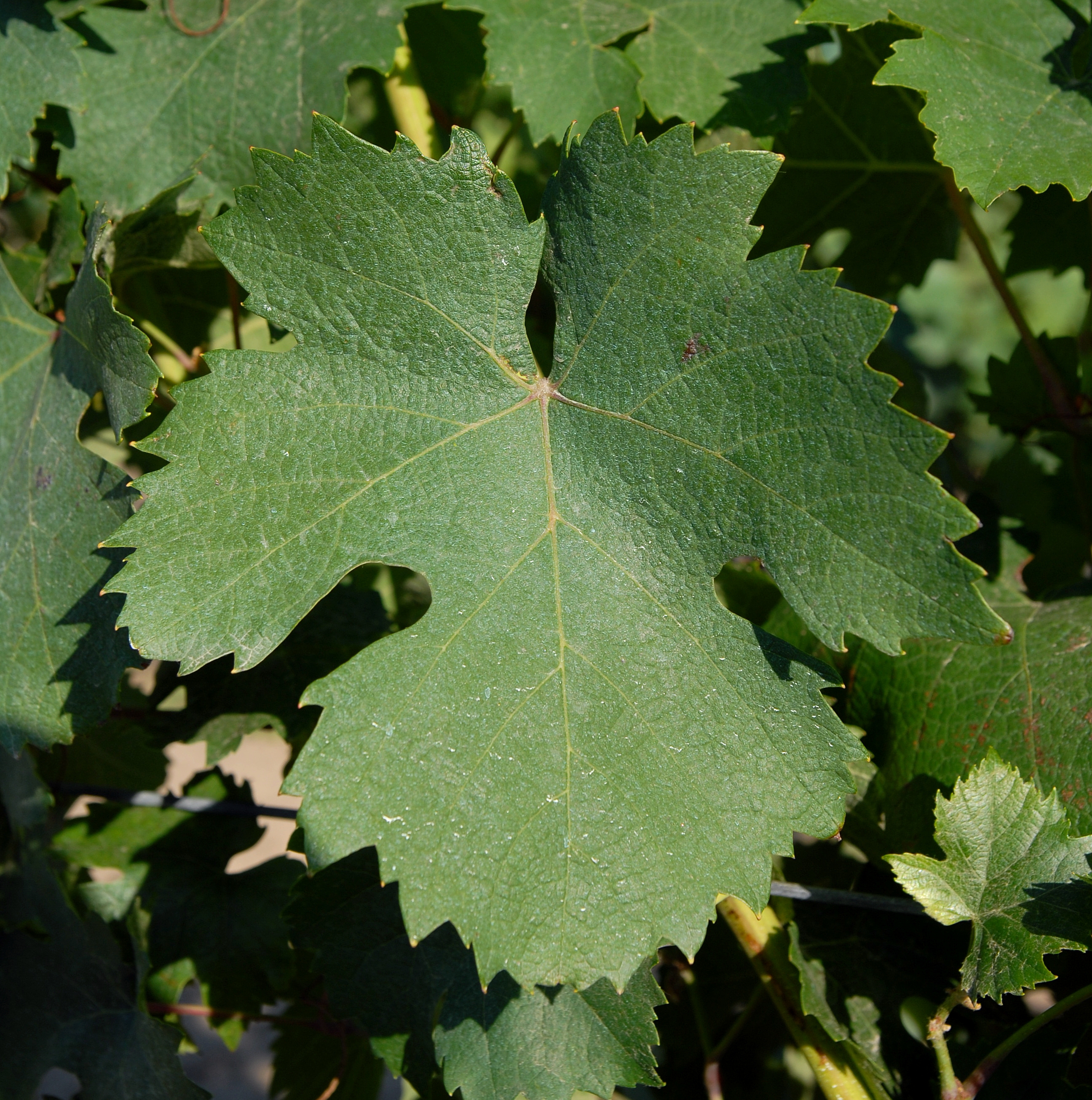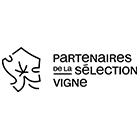Enfariné noir
N
Wine grape variety.
The geographical origin of the variety is specified or, if this is not possible, the area in which it is traditionally cultivated. The genetic origin of the variety is also indicated whenever it is known from hybridiser data or from genetic analyses published or obtained by the teams at INRAE in Montpellier (UMR AGAP) and Vassal-Montpellier Grapevine Biological Resources Centre (CRB-Vigne).
This variety is originally from the North-East of France, traditionnally grown in the Jura vineyards. Based on genetic analysis carried out in Montpellier, Enfariné noir is probably a descendant of Gouais blanc.
This information indicates the normal and statutory use for the grapes.
Wine grape variety.
Name under which the variety is officially registered in the catalogue of grapevine varieties in France and under which it may be propagated and disseminated.
Enfariné noir
Recognised alternative names that may be used to identify the propagation material of the variety in France or in other member countries of the European Union.
There is no officially recognized synonym in France nor in the other countries of the European Union, for this variety.
This information indicates on which list the variety is registered (A or B), whether it is classified for wine grapes, and in which member countries of the European Union the variety is also officially registered (for more information, see the "Legislation" menu.
In France, Enfariné noir is officially listed in the "Catalogue of vine varieties" since 2020 on the A list and classified.
Evolution of cultivated areas in France
The figures provided are taken from vineyard land registers (IVCC, ONIVIT, ONIVINS), general agricultural censuses (SCEES-INSEE) and the current computerised vineyard register (DGDDI, FAM).
Regional vine planting data is available on the following site: https://visionet.franceagrimer.fr/Pages/DonneesInteractivesDocs.aspx?sousmenu=observatoire%20de%20la%20viticulture.
The figures provided are taken from vineyard land registers (IVCC, ONIVIT, ONIVINS), general agricultural censuses (SCEES-INSEE) and the current computerised vineyard register (DGDDI, FAM). Regional vine planting data is available on the following site: https://visionet.franceagrimer.fr/Pages/DonneesInteractivesDocs.aspx?sousmenu=observatoire%20de%20la%20viticulture.
Year |
ha |
|
|---|---|---|
|
1958 |
90 |
|
|
1968 |
56 |
|
|
1979 |
6 |
|
|
2018 |
0.1 |


Only the principal ampelographic elements enabling the varieties to be characterised and identified are provided. They are presented according to the descriptor code recognised by the International Organisation of Vine and Wine (OIV), the International Union for the Protection of New Varieties of Plants (UPOV), the Community Plant Variety Office (OCVV) and Bioversity International (for more information, see the "Ampelographic glossary" menu). The photographs of leaves and grapes were taken in natural conditions, on the vine, in very similar situations in terms of growing conditions (sandy soil, Mediterranean coast): - Domaine de l'Espiguette (IFV), Le Grau du Roi (Gard), - Domaine de Vassal (INRAE), Marseillan (Hérault), - La Gaillarde Campus (Institut Agro | Montpellier SupAgro), Montpellier (Hérault). Only a few photographs, including the tips of bunches, were taken in other conditions.
The identification is based on:
- the white tip of the young shoot with a piping anthocyanin coloration and a high density of prostrate hairs,
- the green young leaves with bronze spots,
- the shoots with red internodes,
- the medium-sized adult leaves, with three or five lobes, club-shaped or U-shaped deep upper lateral sinuses that are usually open, with a fairly frequent tooth inside, a slightly open or closed petiole sinus, fairly large teeth, medium to long compared to their width at the base, with straight sides, low to medium anthocyanin pigmentation of veins, a dark green, involuted leaf blade and, on the lower side of the blade, a low density of prostrate hairs and a high to very high density of erect hairs, especially on the veins,
- the round-shaped berries that have a lot of bloom (with a greyish-white appearance, hence the name given to this variety).
Genetic profile
The genetic profile of the variety is provided for the 9 microsatellite markers (or SSR markers) selected under the European programme GrapeGen06 (http://www.eu-vitis.de/index.php) and by the OIV. The absolute size values of the alleles may vary slightly from one laboratory to another, but the relative differences between the two alleles of one single microsatellite are constant. The genetic analyses were conducted by the INRAE Montpellier team (UMR AGAP) and the IFV’s Plant Material Centre.
| Microsatellite | VRZAG62 | VRZAG79 | VVMD25 | VVMD27 | VVMD28 | VVMD32 | VVMD5 | VVMD7 | VVS2 |
|---|---|---|---|---|---|---|---|---|---|
|
Allele 1 |
194 |
240 |
238 |
178 |
233 |
251 |
225 |
239 |
131 |
|
Allele 2 |
204 |
244 |
262 |
182 |
245 |
271 |
232 |
249 |
149 |
The data on suitability are the result of field observations or, if none are available, of bibliography mining and the study of bibliographic references.
Enfariné noir is a fairly late-season variety, fertile, with regular production, low sensitivity to coulure and average vigour. It is preferable to prune it short or moderately long. It has a semi-erect bearing and needs to be trained. It is well adapted to chalky or marly soils. It is fairly resistant to winter frosts, but its foliage is liable to heat in very hot weather.
These remarks are also the result of field observations or, if none are available, of bibliography mining and study of bibliographic references.
[Translation in progress]
The size of grape clusters and berries indicated are based on the following scales: - Wine grape varieties Size : Very small Bunch (g) : ≤ 100 Berry (g) : 1 - Table grape varieties Bunch (g) : 150 Berry (g) : 2 - Wine grape varieties Size : Small Bunch (g) : 100 - 200 Berry (g) : 1,5 - 2 - Table grape varieties Bunch (g) : 150 - 250 Berry (g) : 2 - 3,5 - Wine grape varieties Size : Moderate Bunch (g) : 200 - 250 Berry (g) : 2 - 2,5 - Table grape varieties Bunch (g) : 250 - 400 Berry (g) : 3,5 - 5,5 - Wine grape varieties Size : Large Bunch (g) : 250 - 400 Berry (g) : 2,5 - 3,5 - Table grape varieties Bunch (g) : 400 - 700 Berry (g) : 5,5 - 8 - Wine grape varieties Size : Very large Bunch (g) : 400 Berry (g) : 3,5 - Table grape varieties Bunch (g) : 700 Berry (g) : 8 Remarks concerning the characteristics of the wines are generally based on tastings organised by juries of professionals.
The bunches are medium-sized, cylindrical, often winged and compact, with a long, rather fragile herbaceous stalk. The berries are also medium-sized, with a fairly thick skin and juicy pulp with a slightly bitter flavour. The wines are tannic and fairly astringent, with good acidity potential and good ageing potential. In the context of climate change, this variety has characteristics that are likely to be of interest in blending.
In this section, the list of certified clones is given. Information on clone conservatories is also provided.
There is no certified clone for this variety yet.
The growth stages indicated are the result of obsrvations made at the Domaine de Vassal Estate where the set of these varieties form a collection. The results are indicated compared to the Chasselas vine variety as a reference in order to make comparisons between years and different sites. As such, for information purposes, the dates for the Chasselas B growth stage at Domaine de Vassal are as follows: - Bud burst, 21 March (average over 50 years) - Grape maturity, 14 August (average over 50 years)
Bud burst: 5 days after Chasselas.
Grape maturity: mid-season, 3 and a half weeks after Chasselas.
Bibliography
- Documentary collections of the Centre de Ressources Biologiques de la Vigne de Vassal-Montpellier, INRAE - Institut Agro Montpellier, Marseillan, France.
- Dictionnaire encyclopédique des cépages et de leurs synonymes. P. Galet, 2015, Ed. Libre&Solidaire, France.
- Traité général de viticulture, Ampélographie. P. Viala and V. Vermorel, 1901-1909, Ed. Masson, Paris, France.
- Monographie des cépages de l'Aube. J. Guicherd, 1905, Ed. Nouei, Troyes, France.
- Les vignobles du Jura et de la Franche-Comté. Ch. Rouget, 1897, Ed. Cote. Lyon, France.
- Le vignoble. A. Mas and V. Pulliat, 1874-1879, Ed. Masson, Paris, France.





